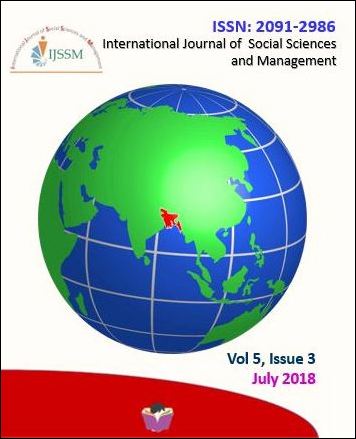An Analysis of the Implementation of the Factors of Customer Retention by Nepal Telecom
DOI:
https://doi.org/10.3126/ijssm.v5i3.20408Keywords:
Customer retention, Customer Loyalty, Nepal Telecom (NT)Abstract
The world is travelling in information era where information is the essential element for every individual, institution, society and country. Communication of information is done by every individual to perform their daily activities, so the mobile telecommunication service has become a basic need where everybody needs telecommunication services. From the latest MIS Report of Nepal Telecommunication Authority (NTA), Market Penetration Rate (MPR) for mobile service 134.41%, which clearly indicates that the number of mobile service users has surpassed the population, and this actually means, at least mathematically , that there are no more people who aren’t using a mobile service in the market. This also means that there are no new customers for mobile service as they must be a new customer to us churning out from some other mobile service provider. Additionally, the data of MPR above 100% means the mobile market has reached the saturation level. When a market becomes highly saturated it’s not only hard to find a new customer, but also costly to get a new customer. Now, the main focus of every company is about retention of customers. Customer retention will be more and more crucial for survival of the company in the mobile telecommunication sector in upcoming days. There are different factors of influence of a customer retention like price, service quality, promotion mix, innovation and customer care. This study will analyze the implementation of the factors of customer retention by Nepal Telecom.
Int. J. Soc. Sc. Manage. Vol. 5, Issue-3: 89-97
Downloads
Downloads
Published
How to Cite
Issue
Section
License
This license enables reusers to distribute, remix, adapt, and build upon the material in any medium or format for noncommercial purposes only, and only so long as attribution is given to the creator.




